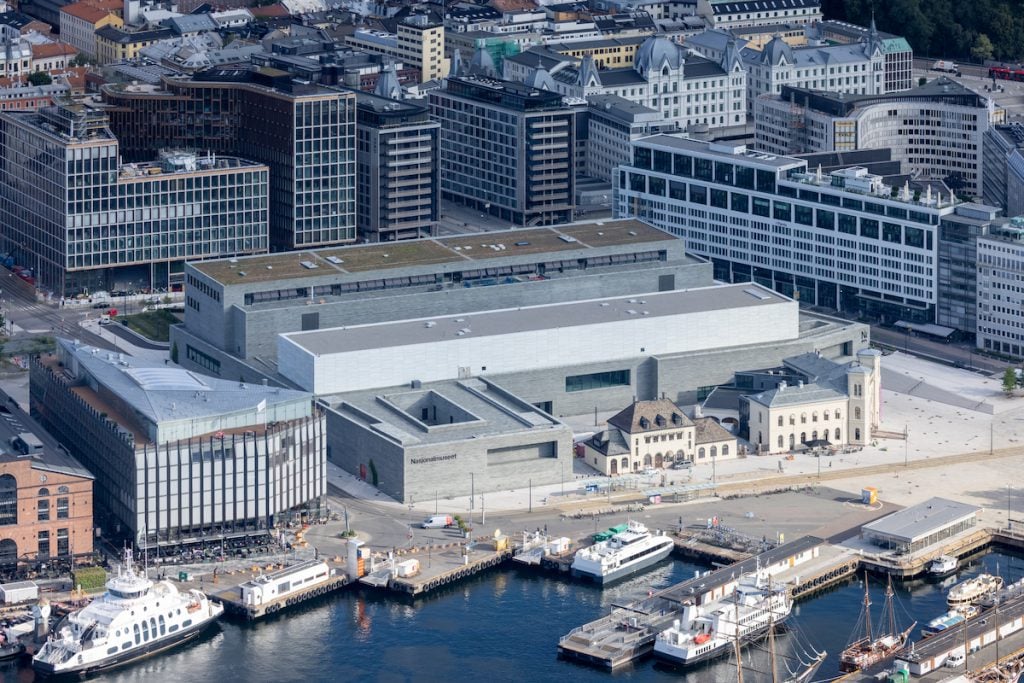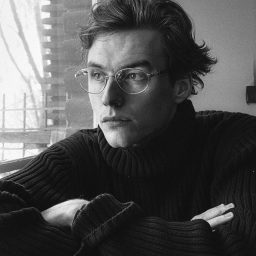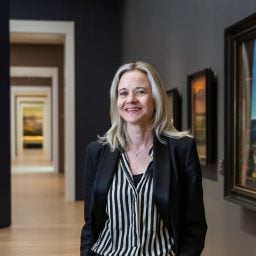The aesthetic of oil money is usually ostentatious. And the new National Museum, which opened in Oslo on June 11, does make the Norwegian capital feel like a true Abu Dhabi of the North.
The 13,000 square meters (140,000 square feet) of exhibition space marks the culmination of the country’s cultural-institutional makeover, which, with the help of enormous oil finds in the North Sea, has gained extraordinary momentum since the 1990s.
The fossil fuel boom has generally meant that every Norwegian is now intimately familiar with the concept of a signalbygg—in other words, starchitecture whose silhouette makes a greater gesture than its content or purpose. Take Snøhetta’s iconic Opera from 2008, or Renzo Piano’s Astrup Fearnly Museum from 2012, to name just a couple of the spectacular new builds that have transformed the city’s image in the last years.
With its oak floors, marble toilets, and exquisite glass vitrines, all custom-made in Italy, the National Museum, designed by Naples-based Kleihues + Schuwerk, provides a new roof over the head of four institutions: the National Gallery, the Museum of Architecture, the Museum of Decorative Arts and Design, and the Museum of Contemporary Art.
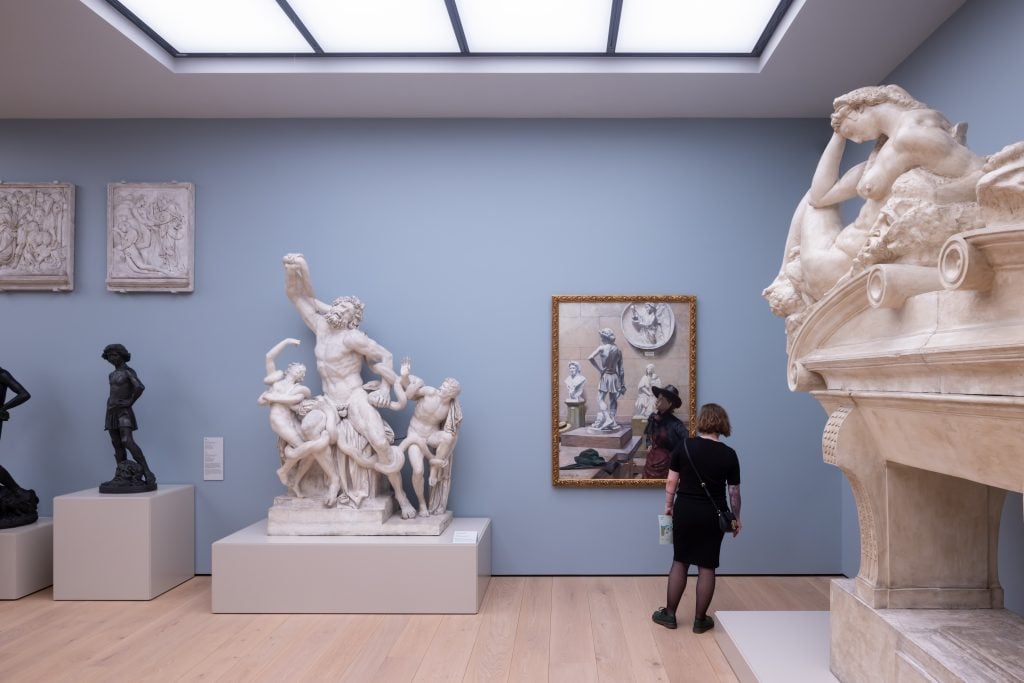
National Museum Of Norway Collection Photo: Iwan Baan
Checking out at 6.1 billion Norwegian kroner ($650 million), the museum has been pegged as the largest in the Nordic region. Yet this is a building that says “No”: after years of delays, here is a complex of enormous hard-edged boxes clad in dark gray slate with few windows and zero funky details. It sits in the city center like a Pentagon for art; on a satellite view, it would look like Google obscured the building for security reasons.
It seems that, with the National Museum, Norway has found a way for its black gold to purchase dignity, authority, and—at a fairly slutty moment for architecture—a chastity so outlandish it is almost eccentric. In one word, it’s a fortress—but what is it protecting?
New Characters for an Old Story
On view across the 86 galleries are beautiful installations of Egyptian statues, one rare Ming Dynasty vase, a dress designed for Kim Kardashian by Norwegian Peter Dundas, and an impressive row of exquisitely produced period rooms, while temporary blockbuster shows are planned for the museum’s spectacular marble encased crown dubbed the Light Hall. It was supposed to be alabaster, but one copes.
The 19th century collection offers breathtaking pictures of mountains and waterfalls, political motifs from a time when Norway was interchangeably under Danish and Swedish rule (it only gained independence in 1905). Such works point to the centrality of art and museums in nation-building projects of the past; what’s astonishing about Norway’s new National Museum is the extent to which this still remains true. I am just not sure it had to.
More than anything, the new building is conservative, and I mean this in the most literal sense: it defends and confines; it makes an effort to rescue history at a moment when both the future and past seem to be constantly slipping between our hands. This begins with its dizzying and manically neoclassical enfilades, and extend to the anachronistic tall wooden doors with brass handles, all so far from the museums that were built in the 1990s and 2000s with barely a door or even a straight angle in sight.
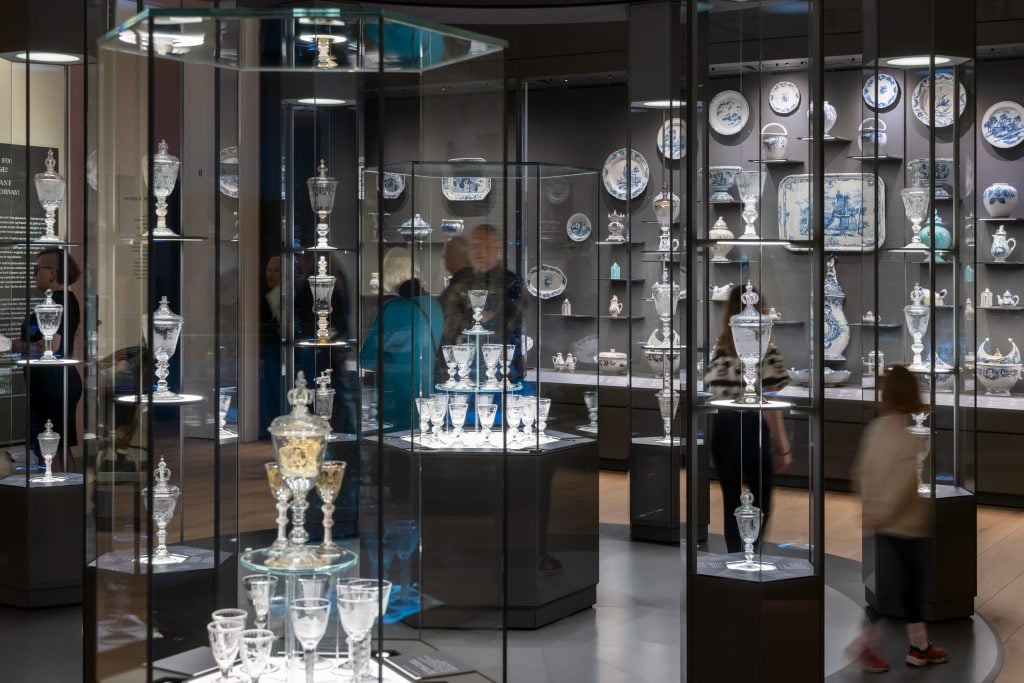
National Museum Of Norway Collection Photo: Iwan Baan
In terms of art, the galleries in Oslo are punctuated by too-familiar ruptures between abstraction and op-art, or conceptualism in the 1970s and the “return” to painting in the 1980s. But the latter is actually not what happened in Norway, where conceptualism never took a strong hold, and painting thus also never really ceded its place as a reigning medium. And so the plotline is maintained in order to introduce the few or forgotten local conceptualists as new characters in an old story that the Norwegian institutions have not, until now, had the square footage to tell.
If not very courageous, such a cause is, like the building’s materials, noble. As are efforts to include, say, indigenous Sami artists into the canon, and devote more space to female artists, such as the fantastic late realist painters Oda Krogh and her contemporary Harriet Backer who gets a whole room of her own.
Still, rather than taking a cue, for instance, from the sophisticated rehanging at the Italian National Gallery in Rome—where a Lucio Fontana hangs alongside a 19th century plein air to exhilarating effect—Oslo’s careful conservatism rather recalls the newly reopened Neue Nationalgalerie and the Humboldtforum—two Berlin institutions that are equally (and in the case of the latter, dreadfully) vintage.
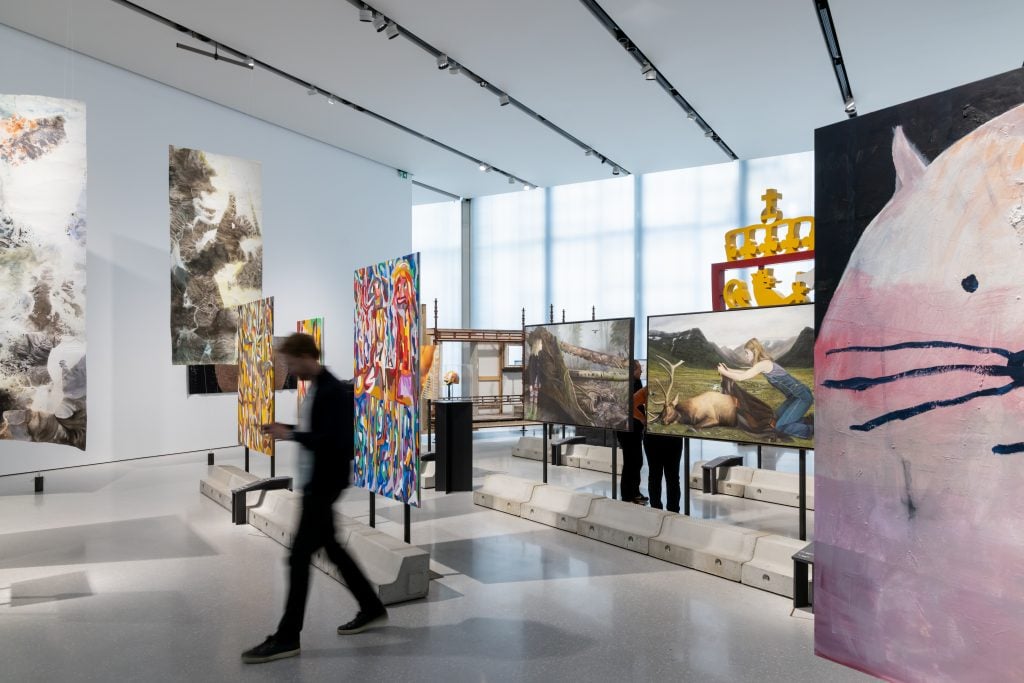
National Museum of Norway, “I Call It Art” temporary exhibition. Photo: Iwan Baan
Other gaps in the collection, like high profile American art, have been compensated for by a partnership with a controversial art collecting family, the Frederiksens. The family’s head scion, John Frederiksen, is a Norwegian who gained a tax-friendly Cypriot citizenship in 2006 to reportedly avoid Norway’s tax inheritance law. That was some years before he received Russia’s Order of Friendship by Vladmir Putin in 2015. So, while around the world museums are disassociating from dubious investments, one of the few countries where public money is not an issue when it comes to arts funding has locked into a deal with one.
It is true that the paintings on loan could not be purchased anew by this or any institution. The family has lent out a jaw-dropping all-star lineup that includes Eva Hesse, Helen Frankenthaler, Georgia O’Keefe, Alice Neel, Agnes Martin, Cecily Brown, Simone Leigh, Lynette Yiadom-Boakye… The list goes on. Yet the choice, again, feels old-fashioned.
To boot, the museum will be host to the mega shows forever traveling through the Art Industrial Complex by Frida Kahlo, Mark Rothko, and Grayson Perry, all sure to sell tickets as well as tea-towels, but about which you might also ask: why? All just to say that one could have come up with a different answer to the question of what a National Museum can be today, one that is more challenging and exciting than simply: the same as everywhere else, or: the same as a hundred years ago.
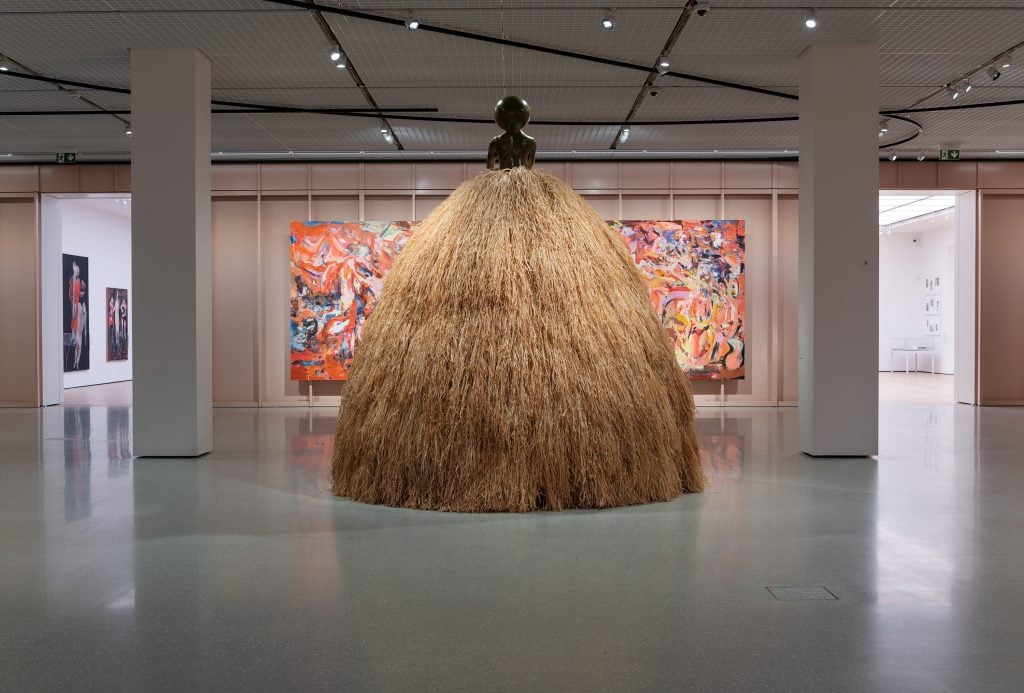
National Museum. Photo: Annar Bjørgli
Fossil Fuel Problems
The slate fortress opens as part of a radically shifting museum landscape in Oslo and Norway, more broadly. In 2021, a much smaller museum dedicated to the artist Edvard Munch relocated into a 13-floor monolith, also on the harbor front, designed by Estudio Herreros and rebranded in all-capped italics as MUNCH. At once repetitive and claustrophobic, oversized and confusing, each of MUNCH’s stacked floors have a narrow glass-enclosed strip for escalators and an obligatory city view (apt for social media) alongside disorienting, windowless boxes for galleries, which feel like being inside a TV.
But, much unlike the National Museum, MUNCH is an institution that desperately wants to be fresh. A collaboration with the Norwegian metal-band Satyricon is one surprisingly successful example of its progressive approach; the massive children’s section and weird biographical gallery of the painter, less so.
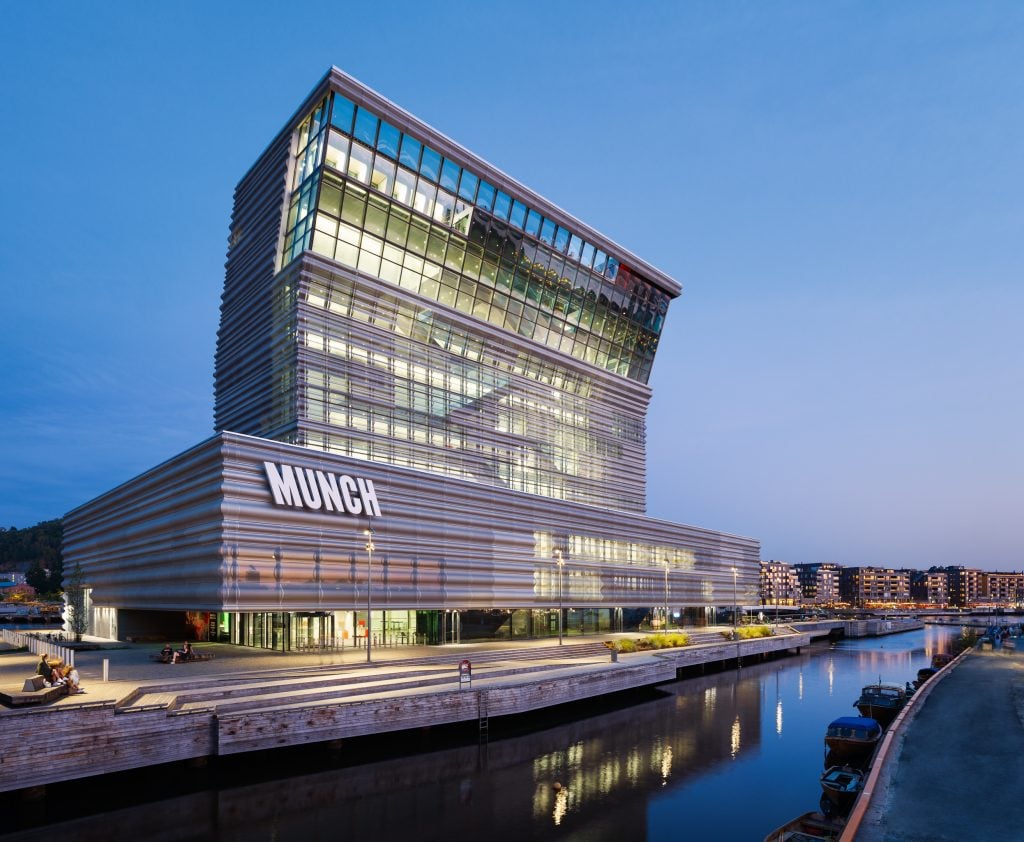
The MUNCH museum in Oslo, Norway. Photo: Einar Aslaksen. Courtesy of MUNCH.
Indeed, freshness makes for a jarring impression given the morose and depressive nature of Munch’s works. I mean this as a compliment to the brilliant artist who described the dark anxiety of modernity like few others. But on how great a scale should such intimate and ambivalent themes be projected? This is a typical fossil fuel problem of measure and proportion. For all that MUNCH is immersive and family-friendly, the tighter edit of around 25 of his paintings on view at the National Museum (among them the masterpieces Puberty, The Kiss, and the famed Scream) actually do the job.
An hour’s drive outside of Oslo at Kistefos, a new commission by Pierre Huyghe opened on the same day as the National Museum in a sculpture park and museum backed by a private investment company. In 2020, the site’s spectacular new gallery designed by the Bjarke Ingels Group (BIG) joined the huge Claes Oldenburgs that tumble down the hillside, the op-pop of Jeppe Hein and Anish Kapoor, and an enormous bronze donut waterfall by Marc Quinn that looks like Lord of the Rings fan-art.
Called The Twist, the tunnel-like, wood-lined gallery and its metal facade indeed coils across the river. As a building it is impressive, but as an exhibition space it is difficult. No matter—its real strength is its integrity: It is not romantic about the nature that surrounds it, but exhibits the same brute force of the extractive industries that funded it. Kistefos began as a water-powered wood mill, and the best moments in the sculpture park are when you recall how much of the language of postmodern sculpture stems from precisely such industrial machinery.
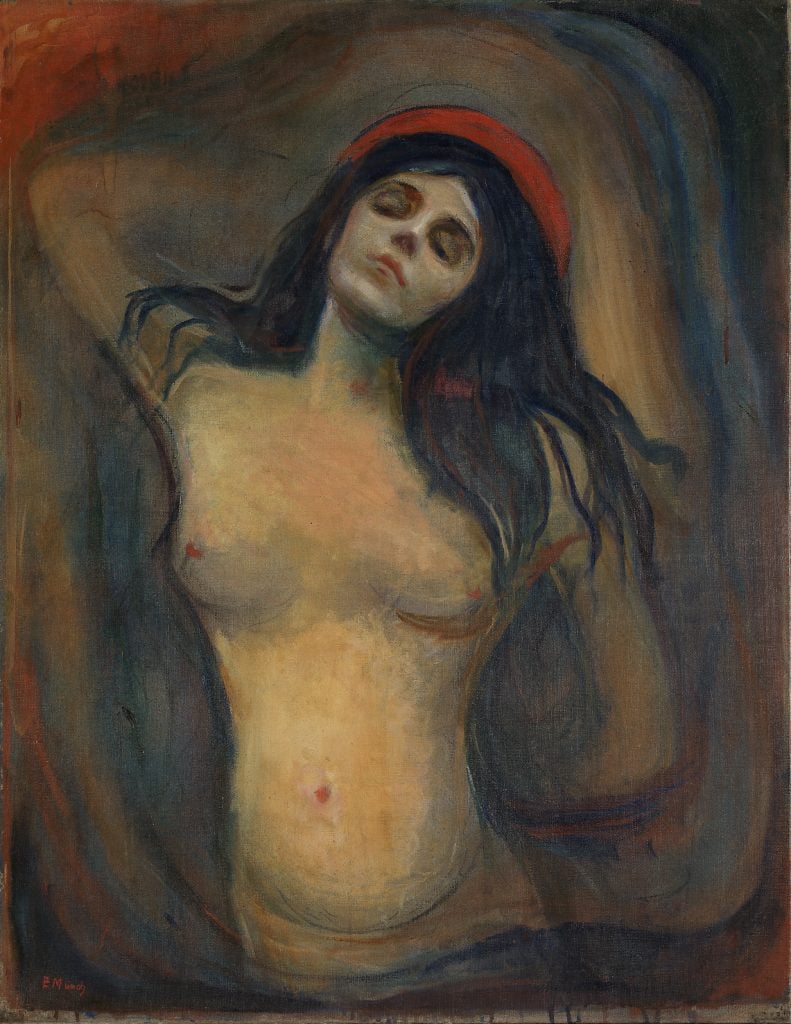
Edvard Munch, Puberty (1894-95). Photo: The National Museum / Jaques Lathion
Much of the explosion of the Norwegian art scene in the past two decades has happened in the realm of either blunt expressions of wealth like Kistefos, cringy pop-cultural crossovers like the Satyricon collaboration at MUNCH, or highly discursive politico-academic concepts like the Bergen Assembly, a triennial so deconstructed in its formats that it’s difficult to find words for what it is. Where does the National Museum fit in here?
Probably somewhere in between. While another mega institution hosting the same mega exhibitions as other colossal institutions around Europe is frankly the last thing anyone needs, the National Museum wins by its social-democratic seriousness. Rather than starchitecture and along with aquavit, this is Norway’s true brand. Its dutiful sense of civic responsibility, thorough and well-produced displays, as well as its sheer capacity, mean this place could set the scene for so many things.
Already, the Light Hall hosts an eccentric show of more than a hundred young Norwegian artists, disowned by the building’s architect Klaus Schuwerk as a “flea market.” Such a conflict suggests the public sphere is less undead than I thought—so perhaps there’s hope after all.
